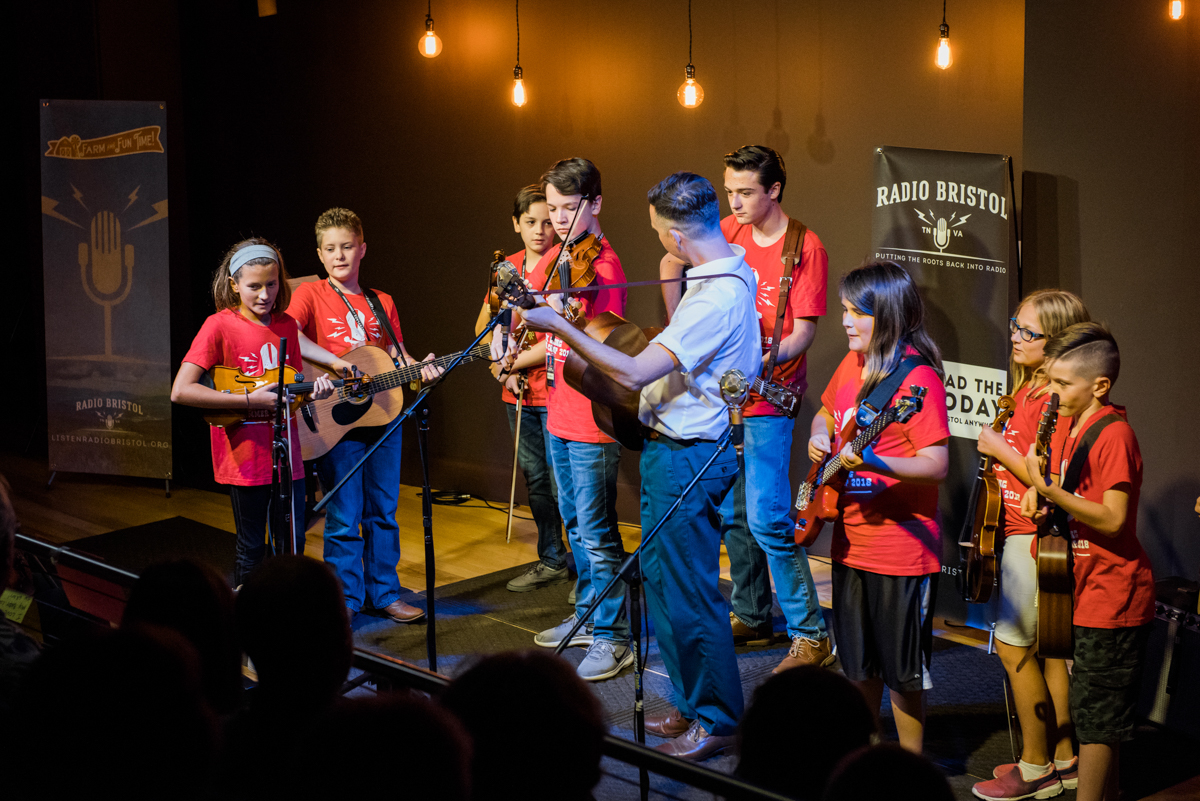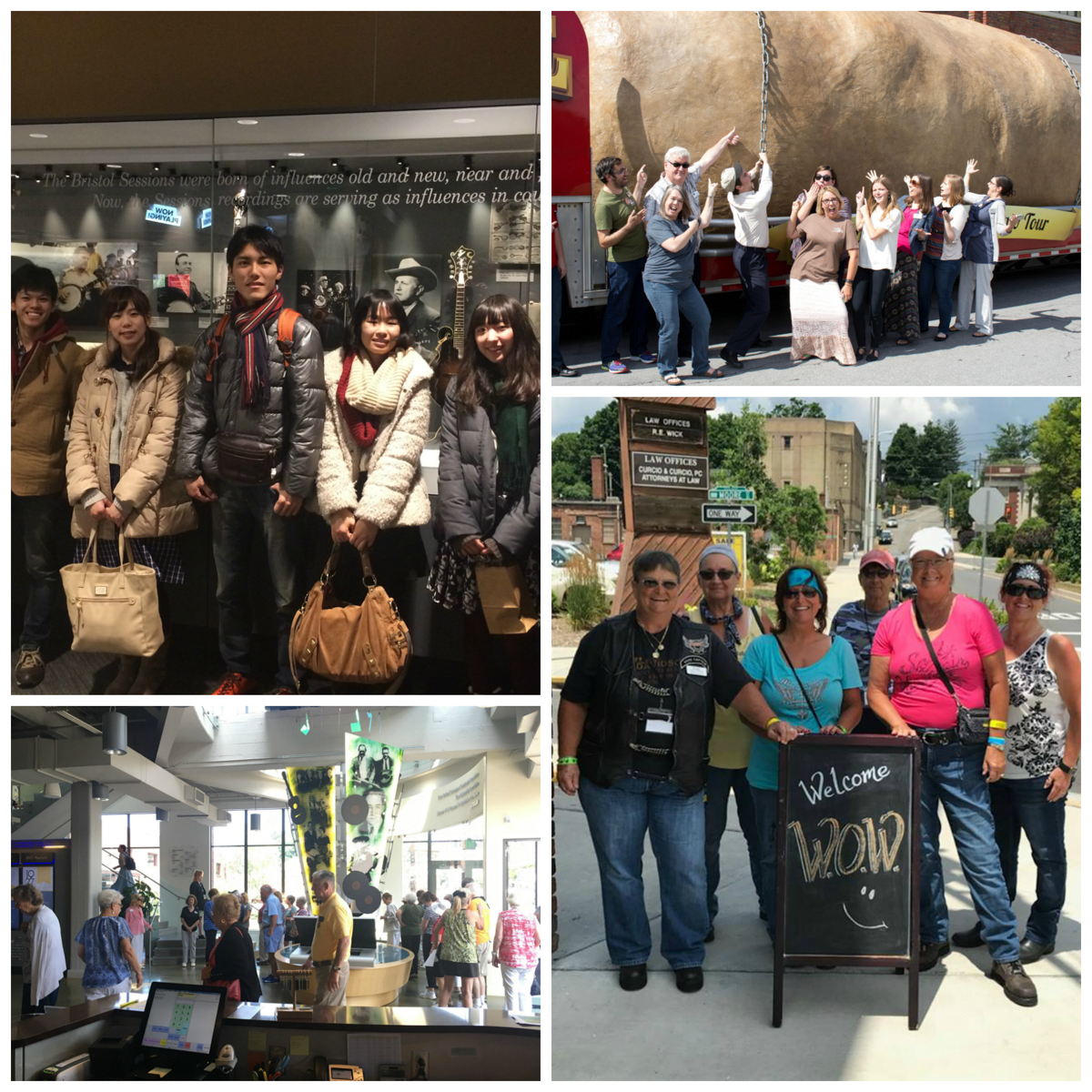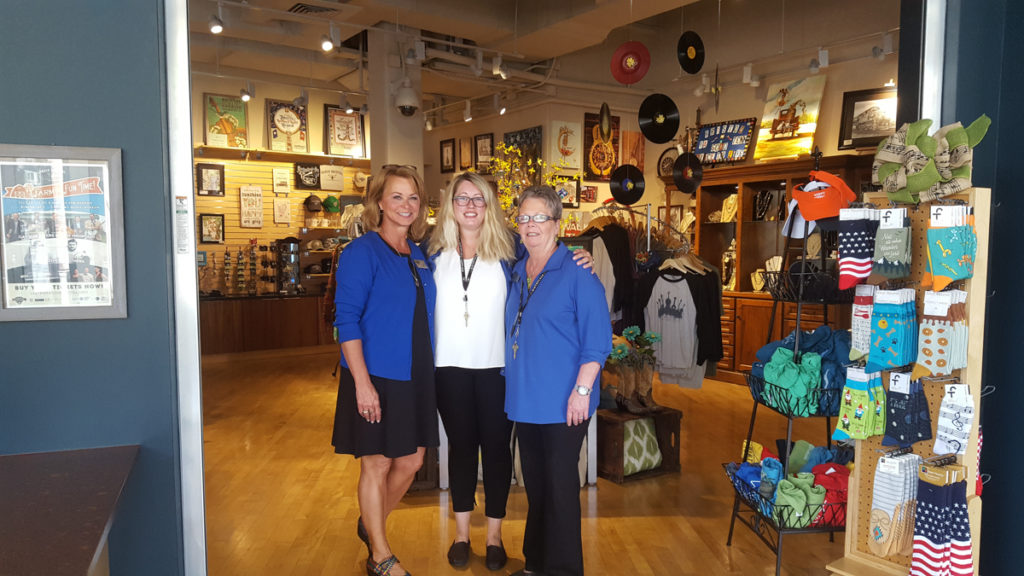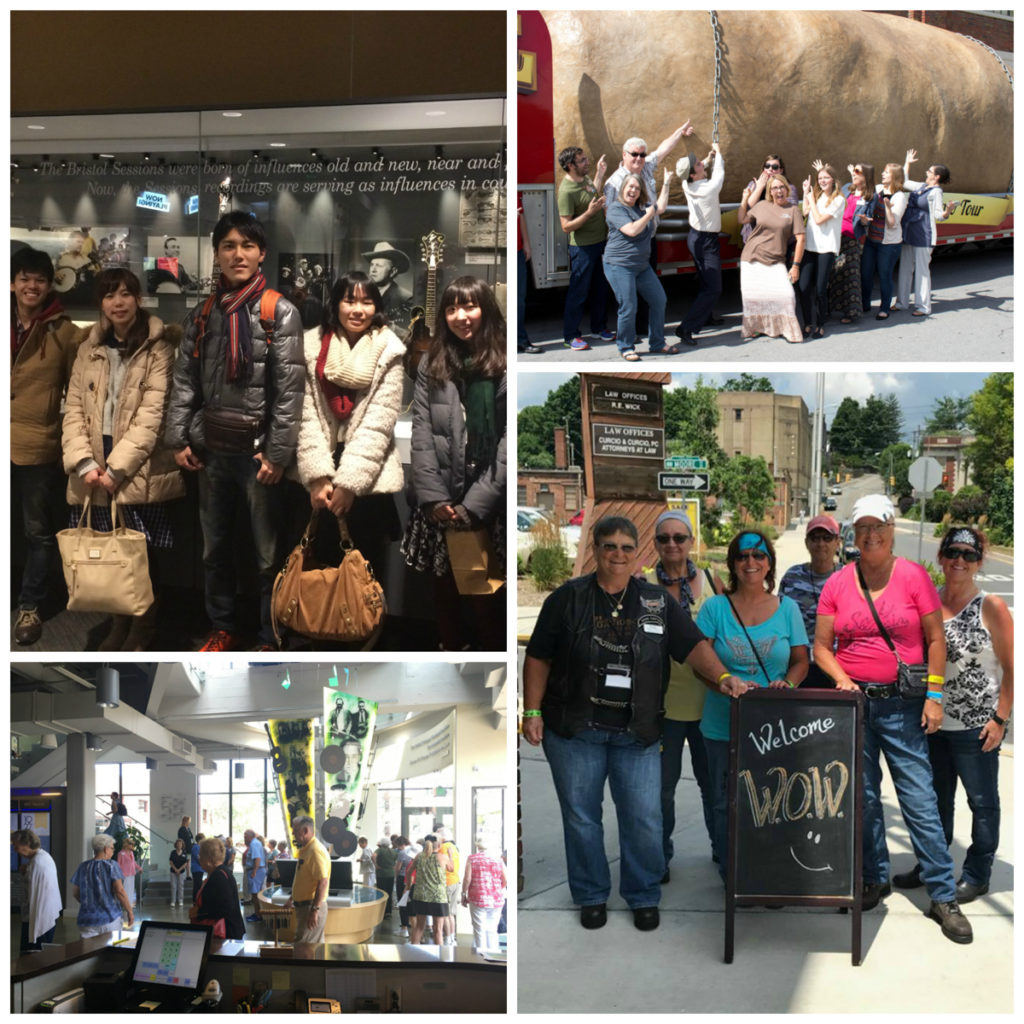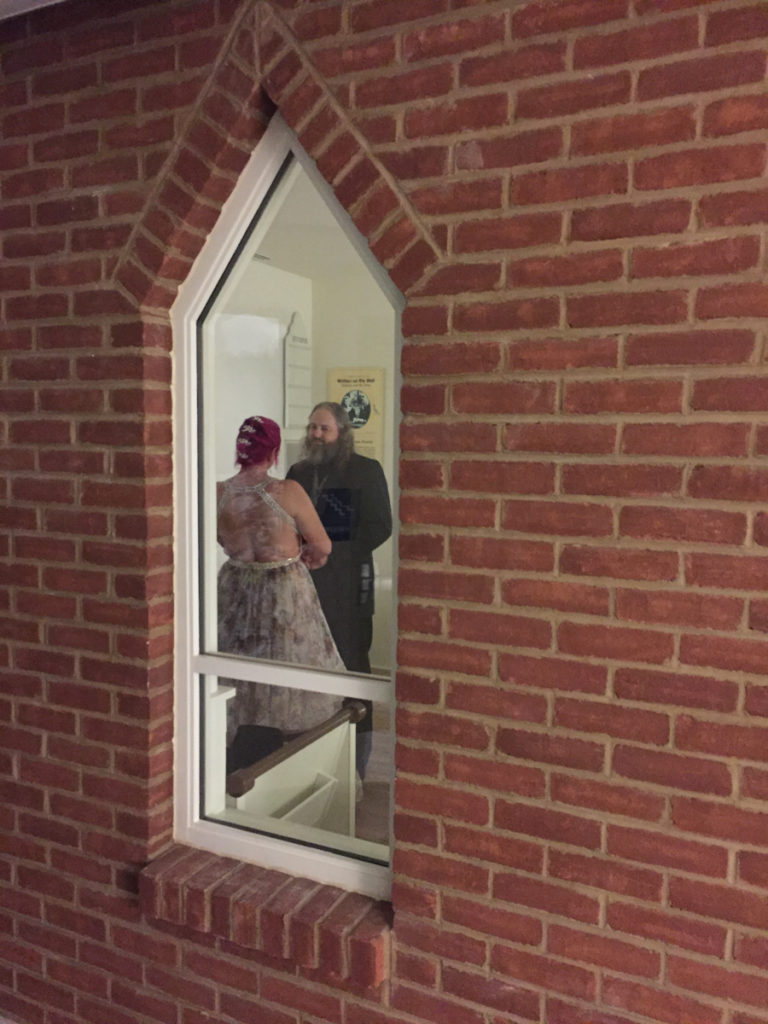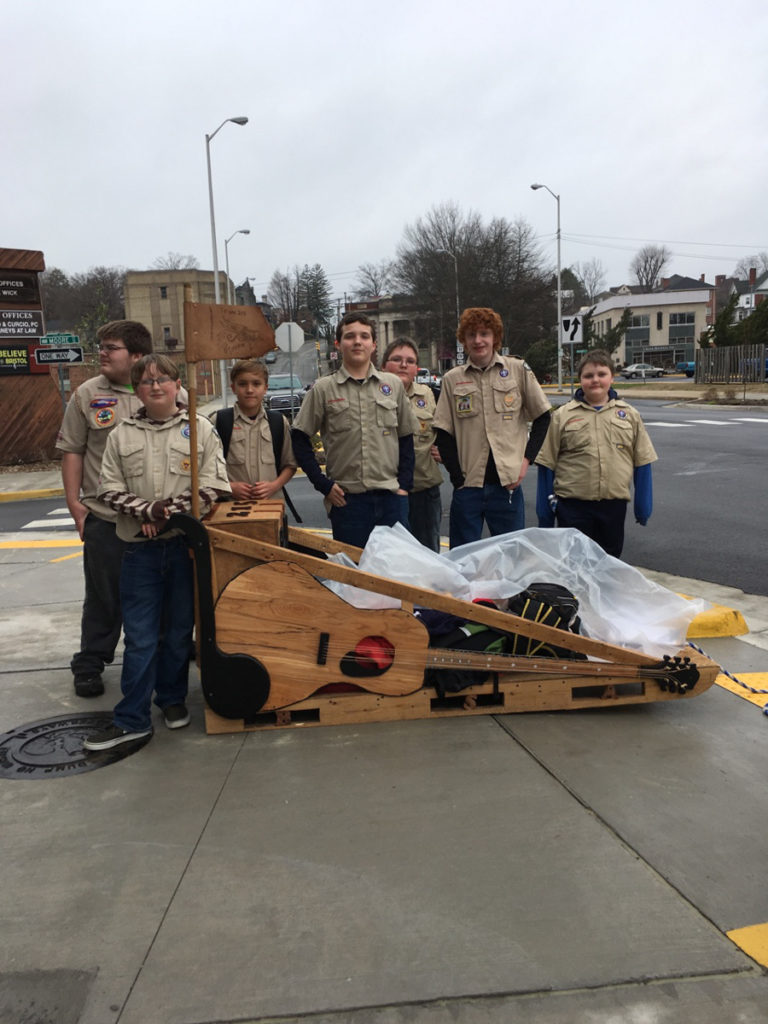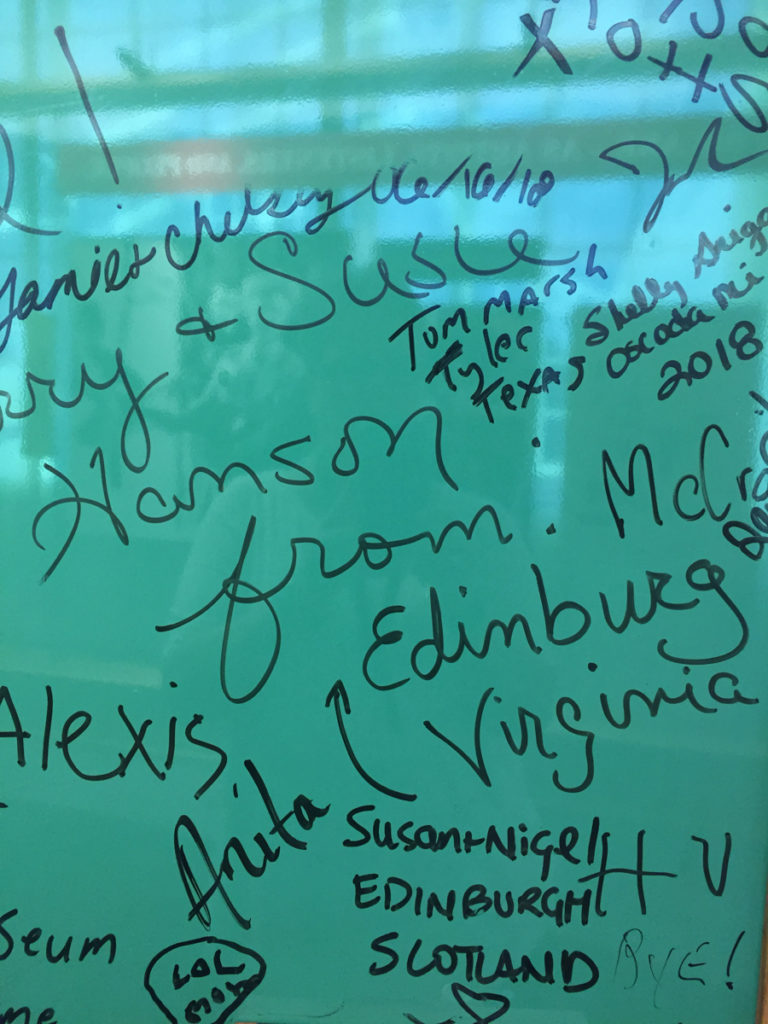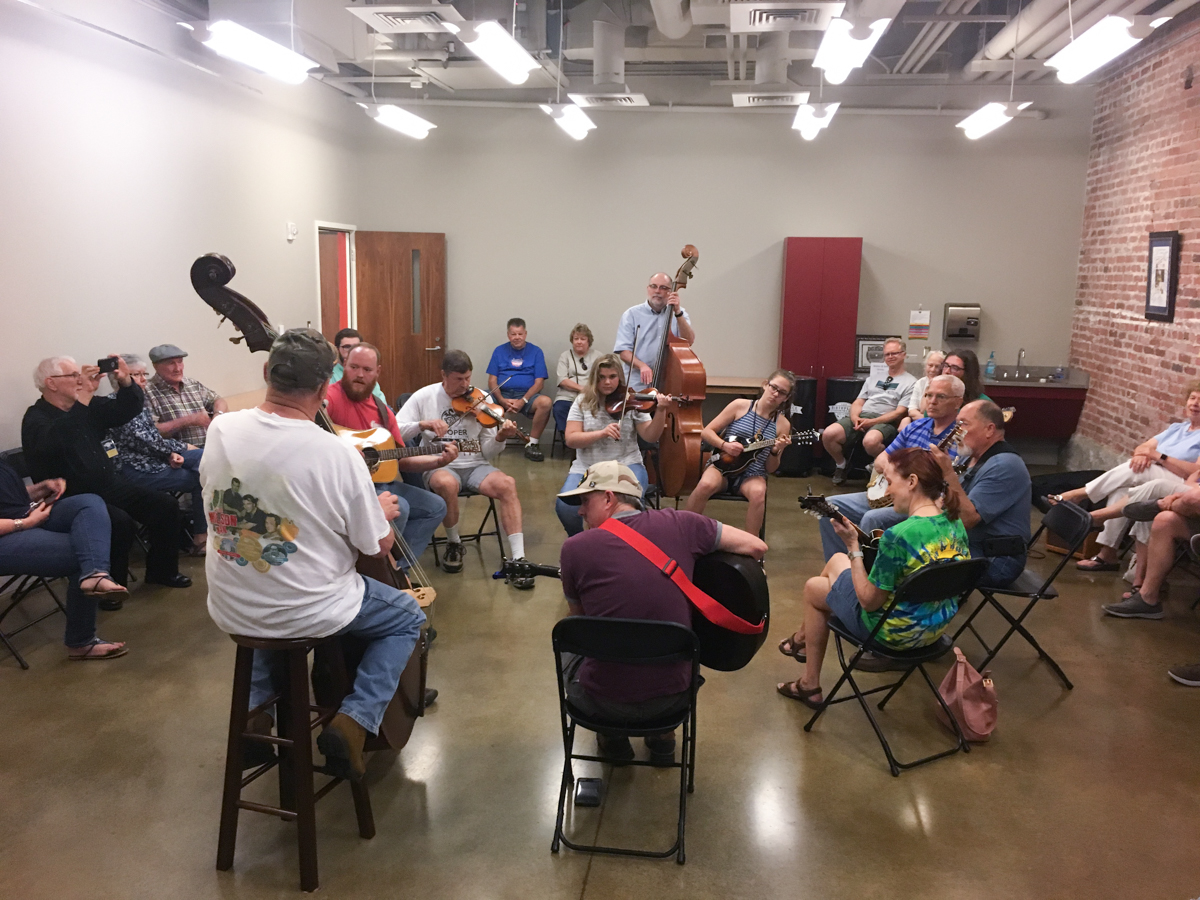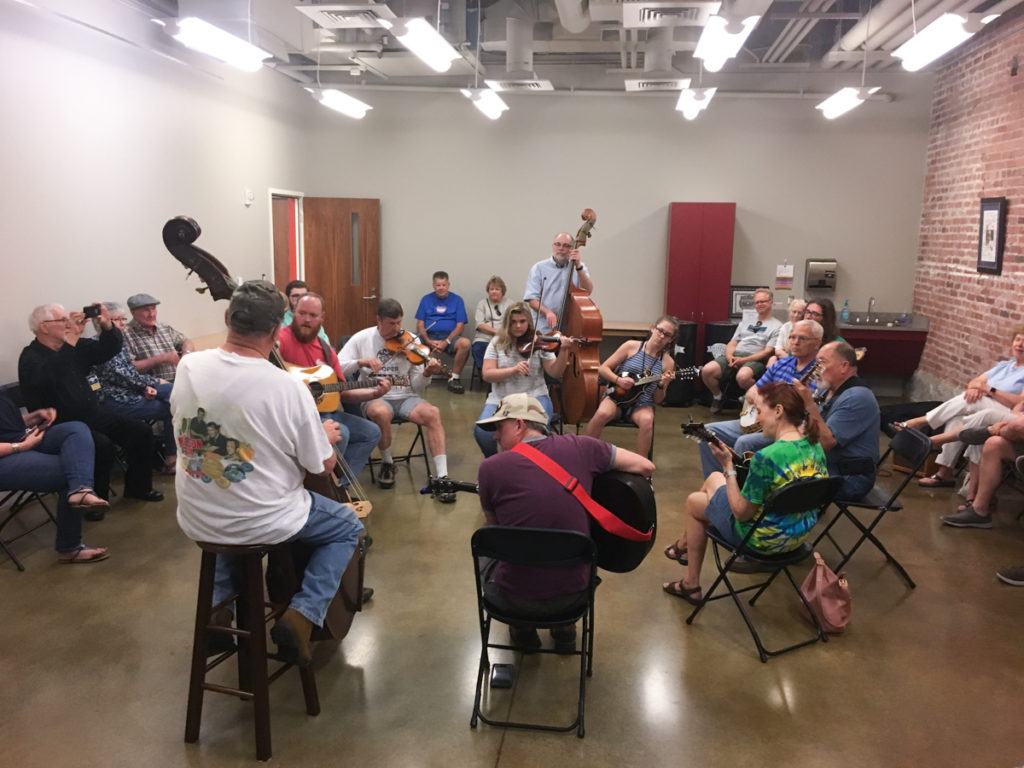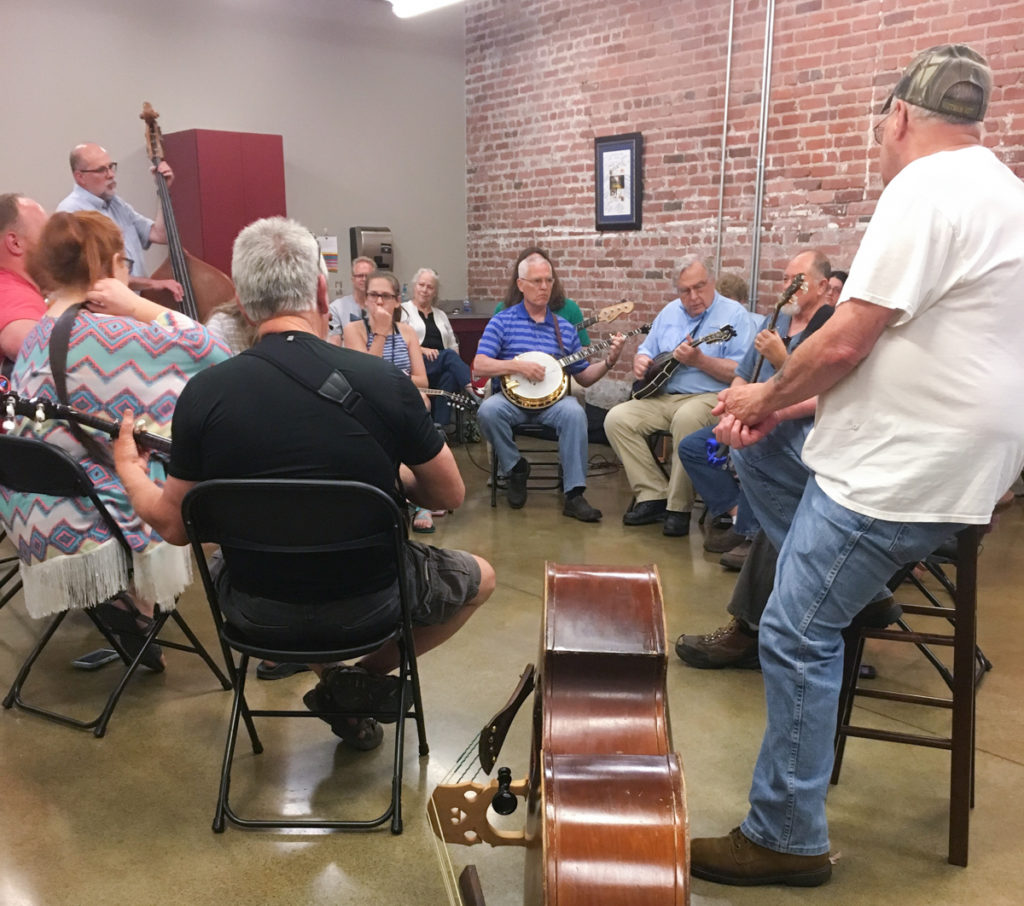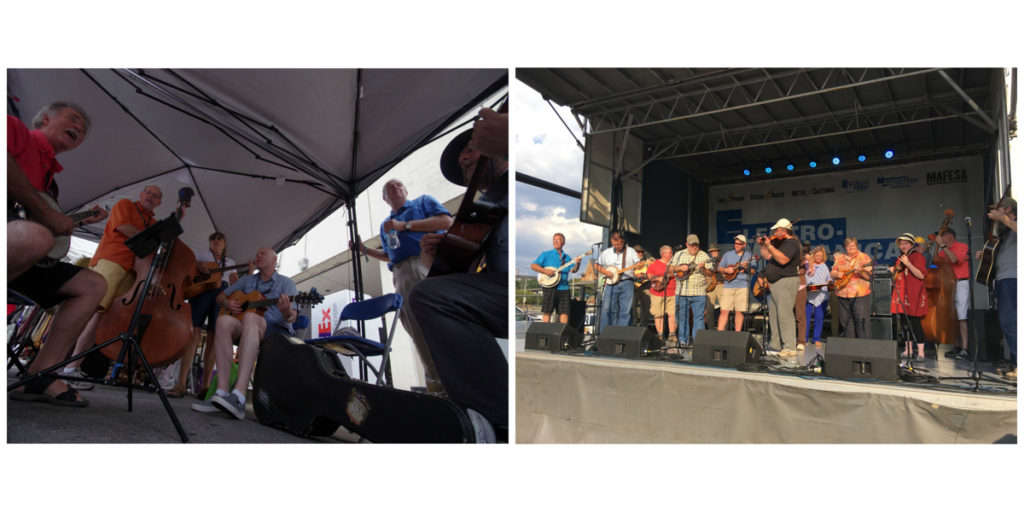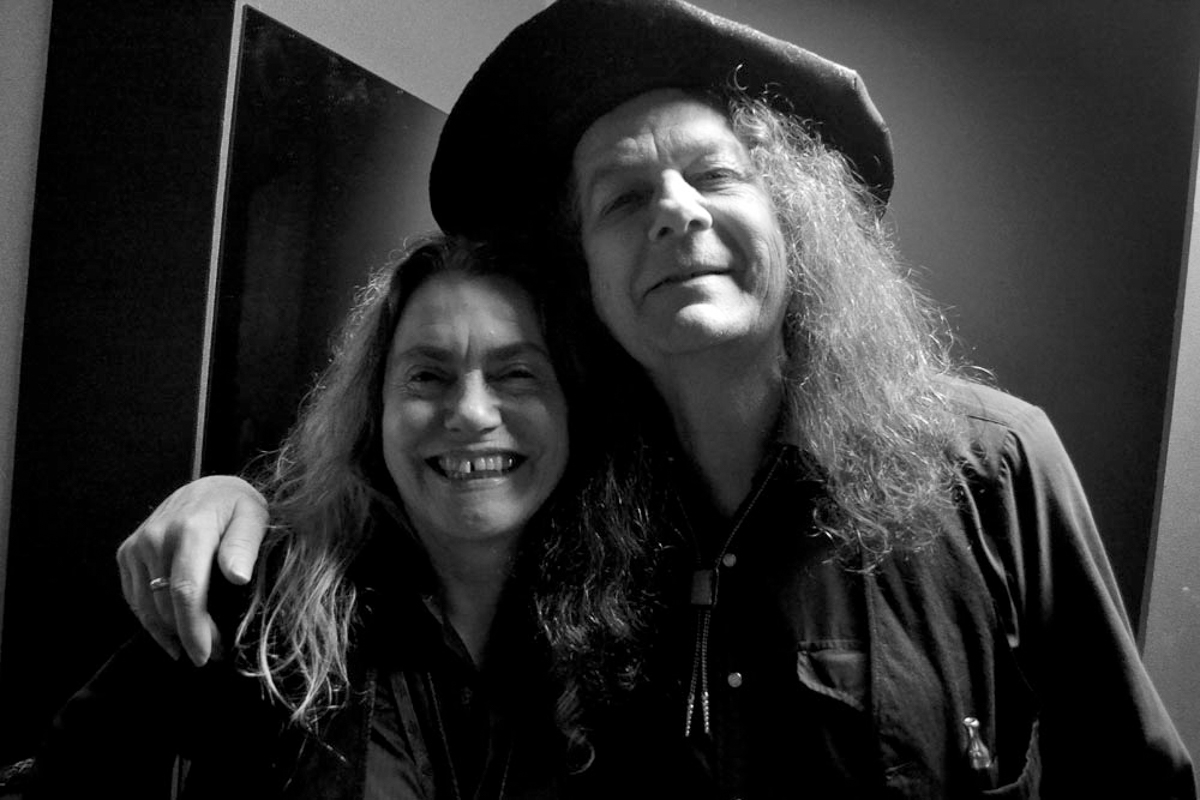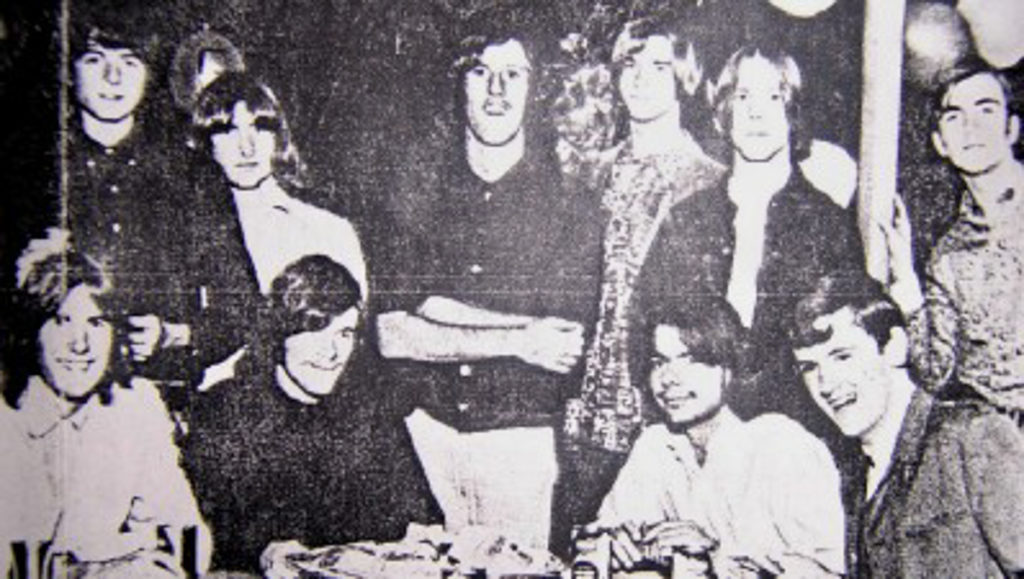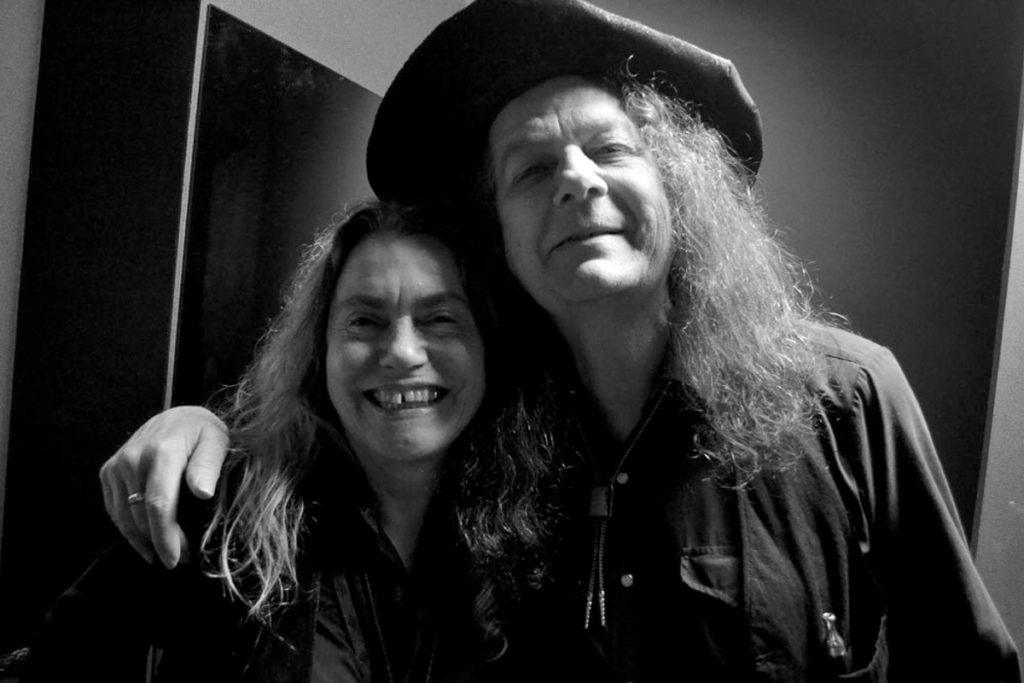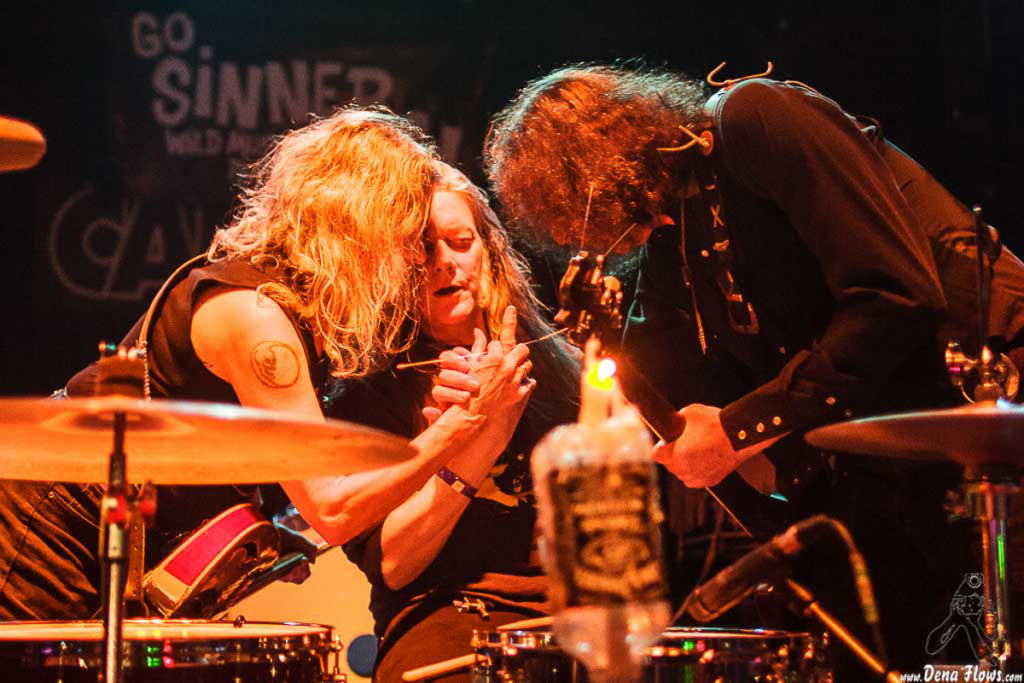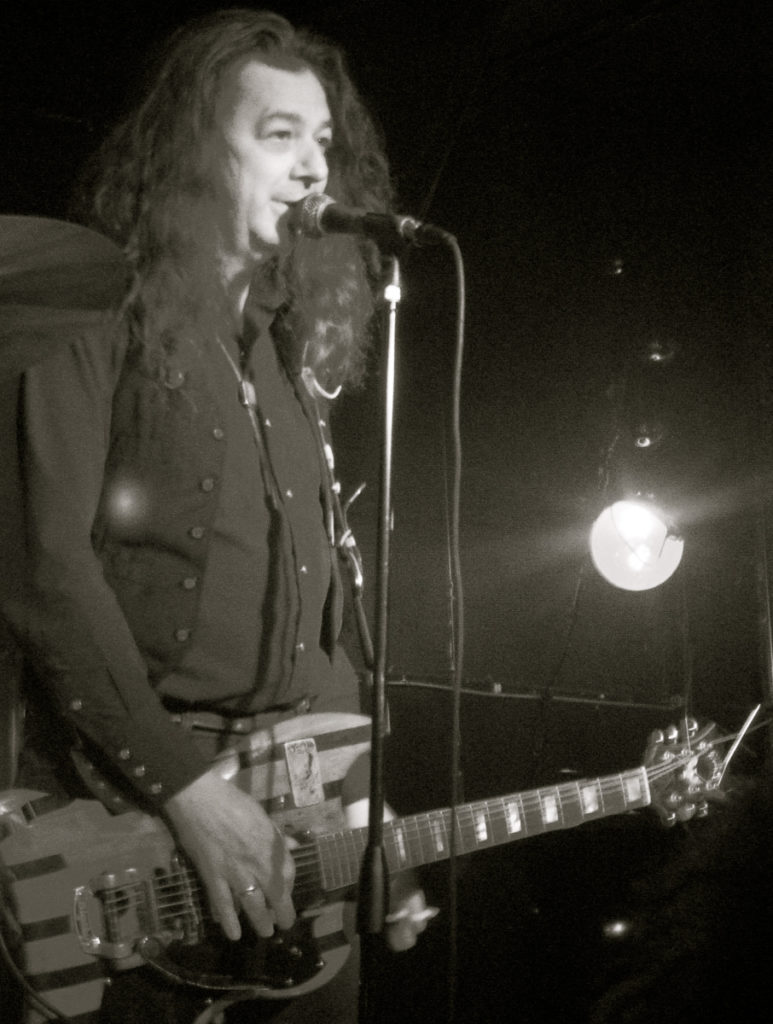After taking a month off, Farm and Fun Time was back in full swing on July 12! From close sibling harmony to red-hot fiddling, this Farm and Fun Time showcased the diverse sounds for which the show has become known. Thanks to our sponsor Eastman Credit Union, Radio Bristol was able to bring the show not only to those who joined us in the audience or tuned in to WBCM-LP, but also to viewers far and wide via Facebook Live. Be sure to like WBCM – Radio Bristol on Facebook and tune in every month!
Host band Bill and the Belles set the stage for a night of music filled with youthful enthusiasm. After kicking off with the children’s classic “Polly Wolly Doodle,” silliness soon turned sentimental with a heartfelt rendering of Alfred G. Karnes’s “Days of My Childhood Play.” Our “Heirloom Recipe” presenter for the evening was Ken Monyak, a long-time homebrewer who opened Bristol Station Brews and Tap Room, the Twin Cities’ first craft brewery. Ken presented the recipe for his seasonal “Strawberry Pail Ale,” named for the buckets filled with locally grown Scott’s Strawberries that give this brew its distinctive summertime kick. As an ode to this fine local beer, Bill and the Belles performed “Bye Bye Bill,” in which a beer-drinking whale sends a well-meaning swimmer to his untimely fate when he presents the whale with a stout instead of the local pale ale, the favorite beverage of whales everywhere. Remember that for your next whale encounter!
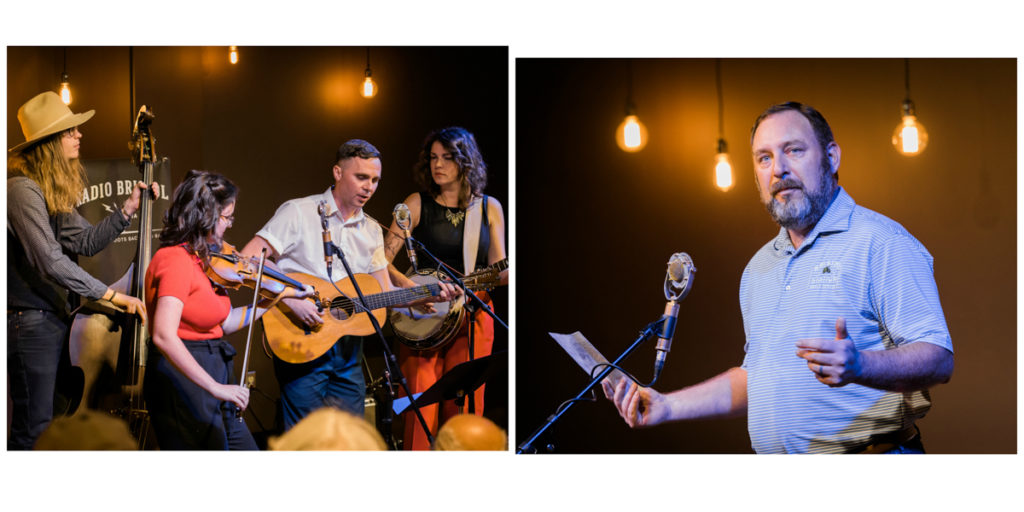
Our first featured musical guests were The Brother Brothers. Originally from Peoria, Illinois, twins Adam and David Moss achieved successful music careers separately; they are now blending their voices in a near-perfect sibling harmony that dazzled our audience. Performing on fiddle, guitar, and cello, The Brother Brothers lean more to the darker, moodier side of traditional music in their original compositions. The duo sang “Cairo, Illinois,” “Bird in a Tree,” and other tunes off their 2017 Tugboats EP. Look for a full-length record from these guys soon!
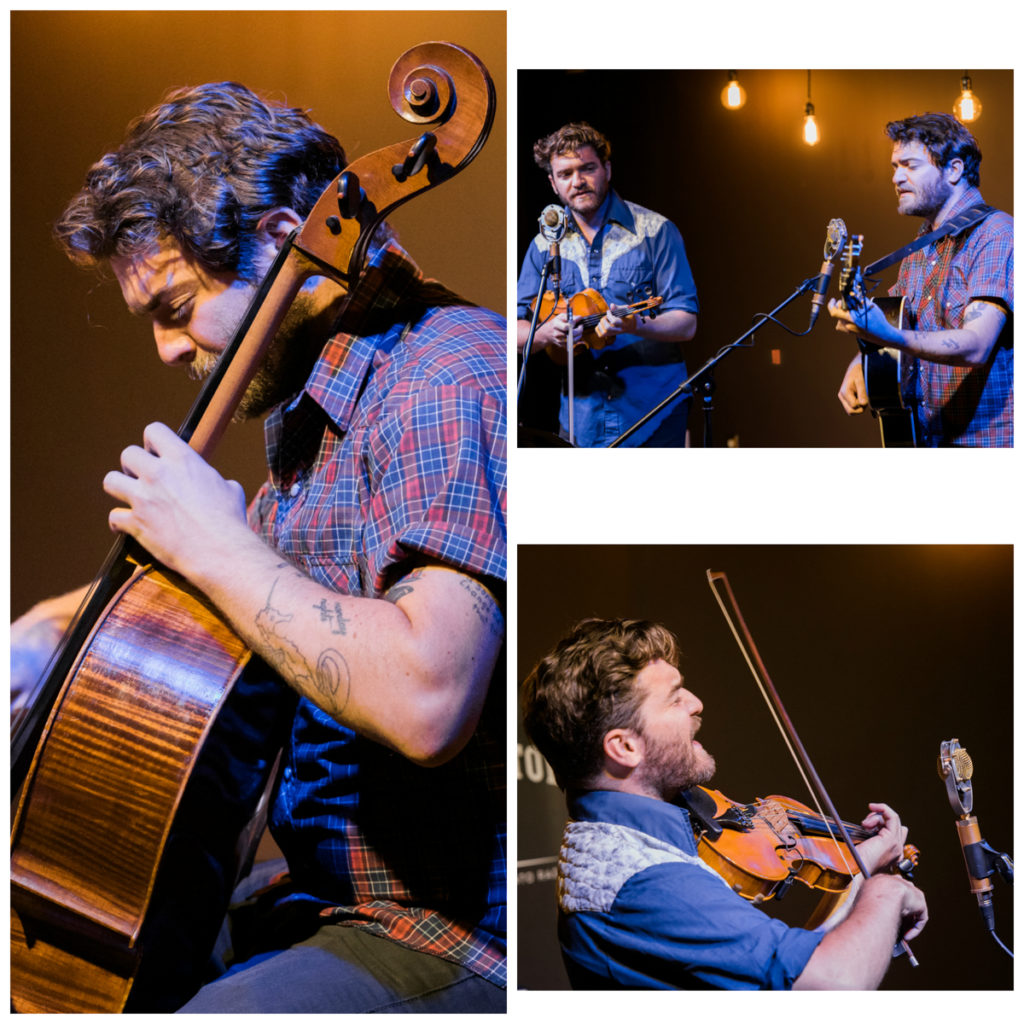
Our “ASD Farm Report” segment usually focuses on fostering sustainable agriculture, but this month’s segment focused on growing the next generation of traditional Appalachian musicians! We spoke with the instructors from the Birthplace of Country Music’s acclaimed Pick Along Summer Camp about their role in helping to preserve our region’s musical heritage and passing the knowledge on to future stars. Working hard all week, campers from the intermediate camp session produced and performed the first ever live “Farm and Fun Time Jr.” segment. Combining musical performance, history, and a catchy handwritten jingle, the show truly brought some extra fun to Farm and Fun Time! You can check out their segment here.
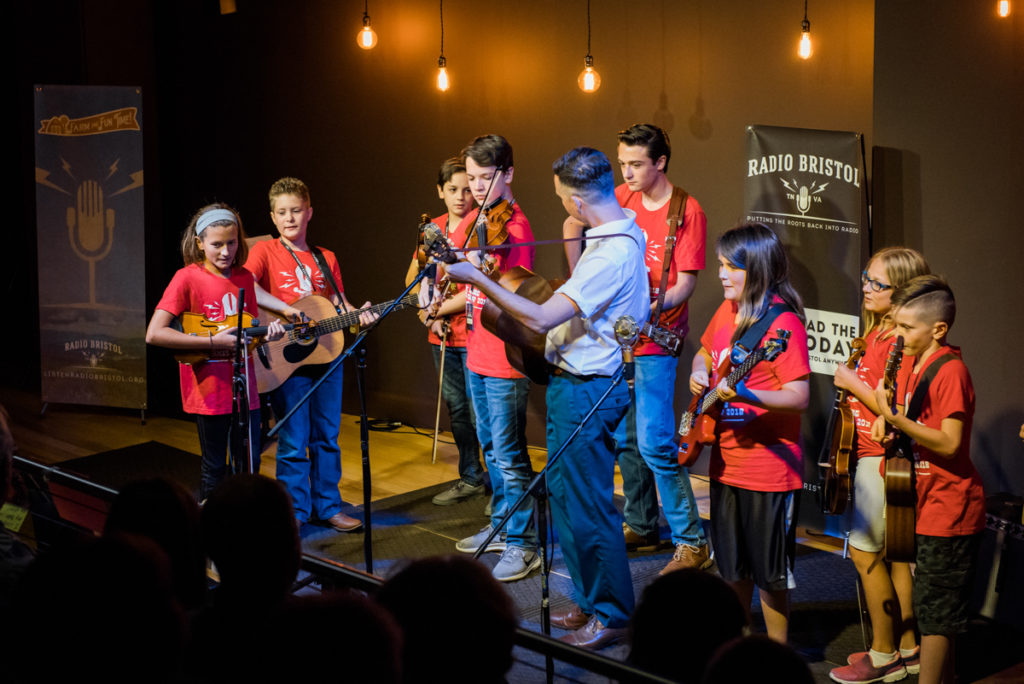
Our final musical guest of the evening might have come from just down the road in Piney Flats, Tennessee, but his fiddle is making him a name known around the world! Carson Peters has played on The Tonight Show with David Letterman, Steve Harvey’s Little Big Shots, and even at The Grand Old Opry with Ricky Skaggs, and tonight, he wowed the Farm and Fun Time crowd with his virtuosity. At only 14, Peters is already a seasoned entertainer, and his band Iron Mountain knows how to put on a show. Performing everything from the bluegrass standards of Flatt & Scruggs and Mac Wiseman to a capella gospel songs, Peters and Iron Mountain captivated the audience with their sound and showmanship. Though he’s already done a lot, expect more great things from this fiddlin’ phenomenon in the future!
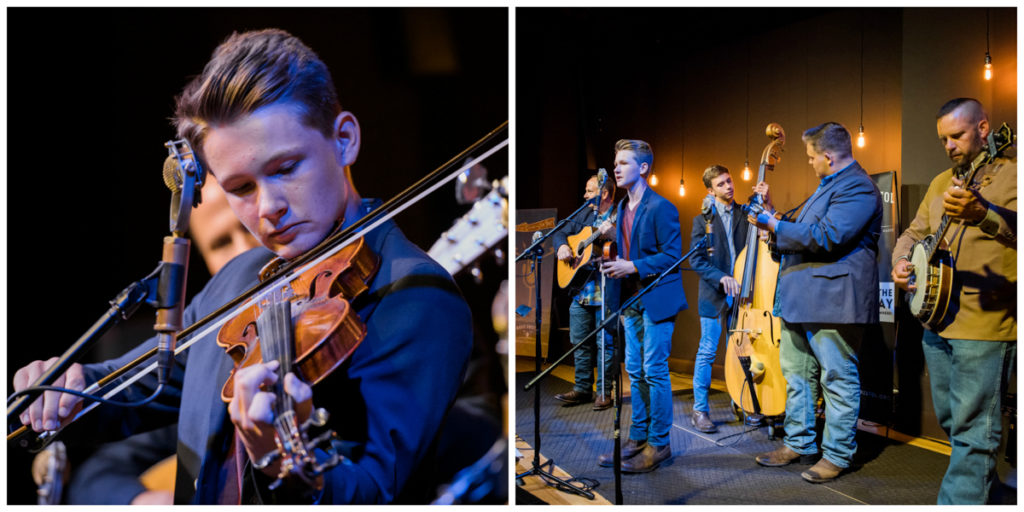
Thanks to everyone who came out made this a wonderful evening of fun and music! If you couldn’t join us this month, tickets are now available for August’s Farm and Fun Time featuring Che Apalaché and Jesse Lege and the Old Fashioned Aces!


